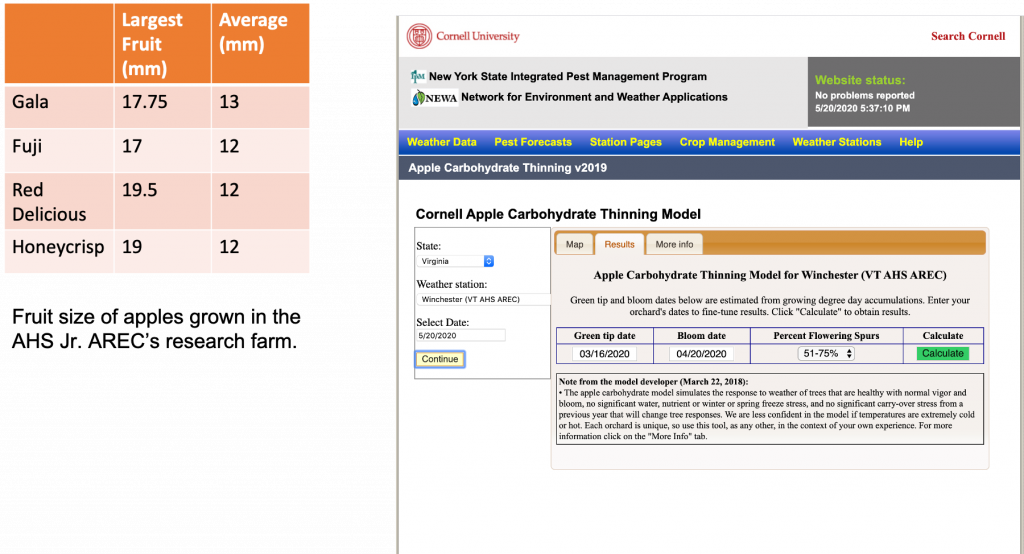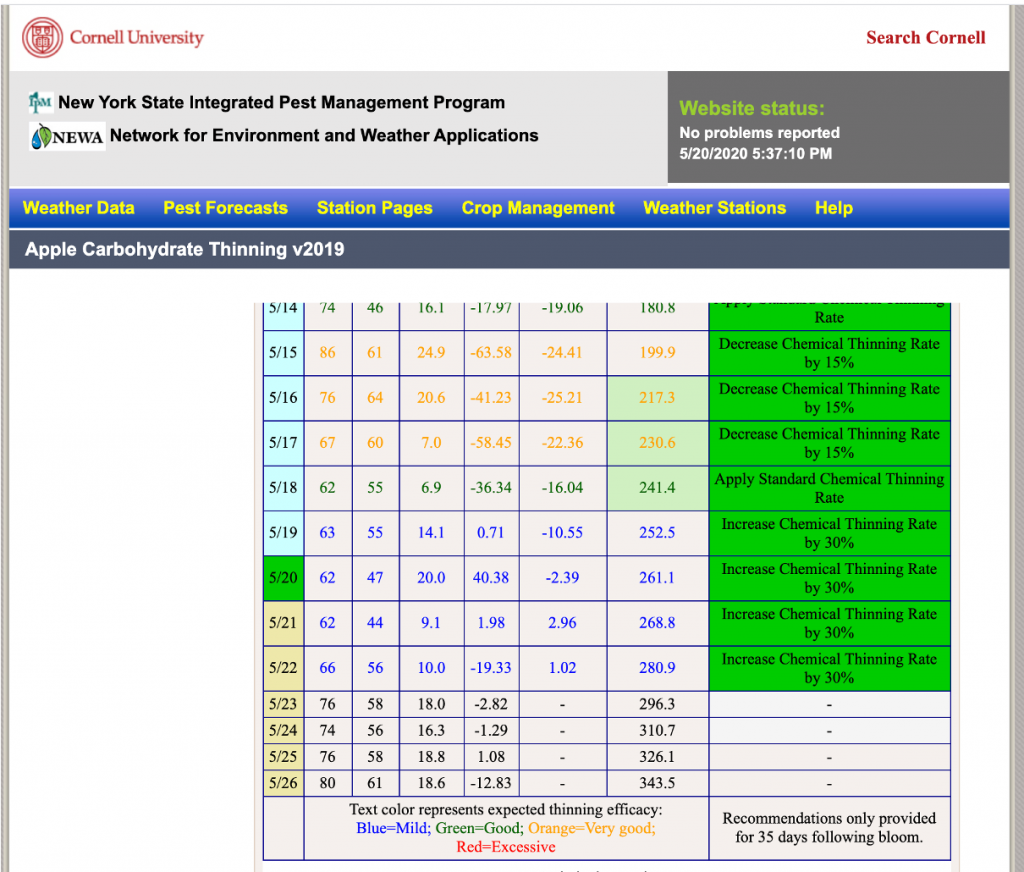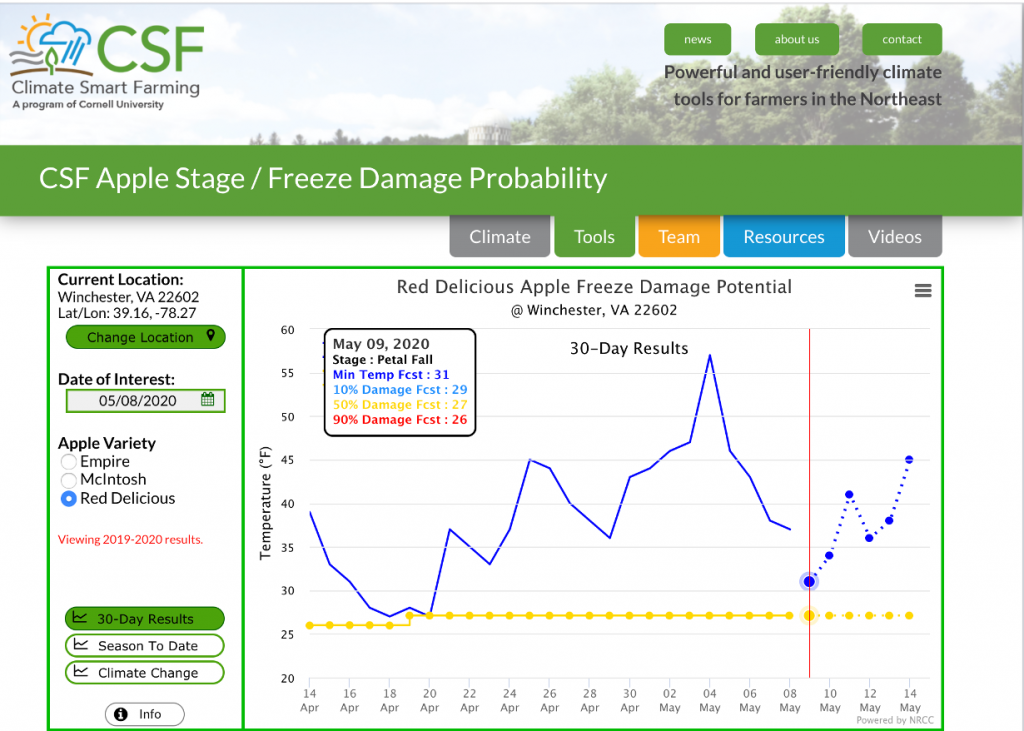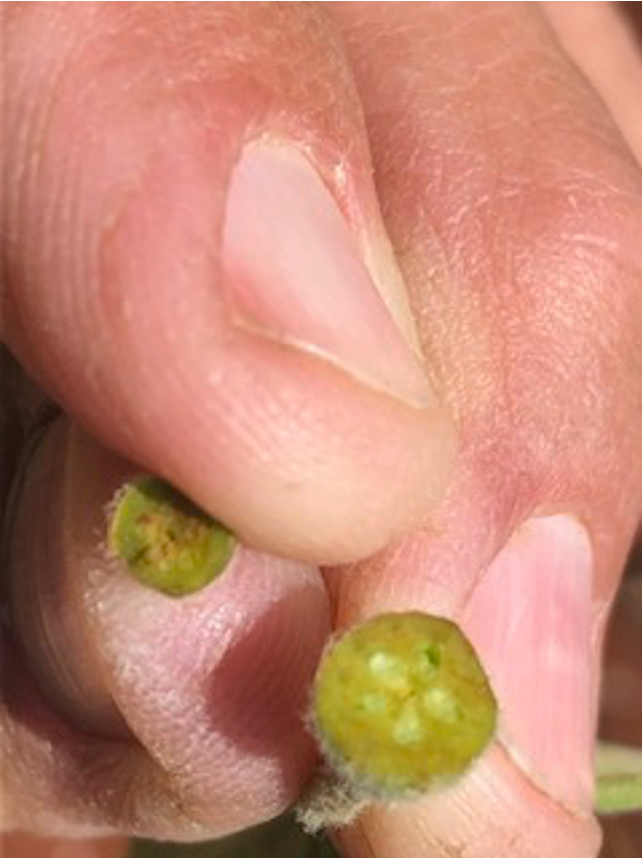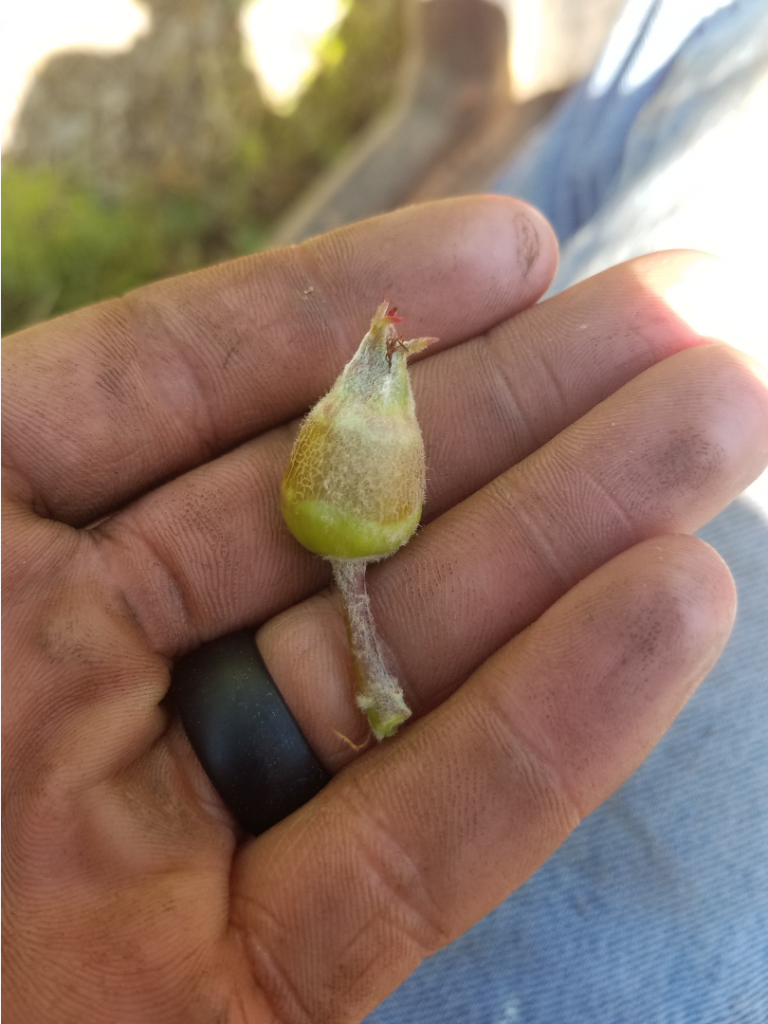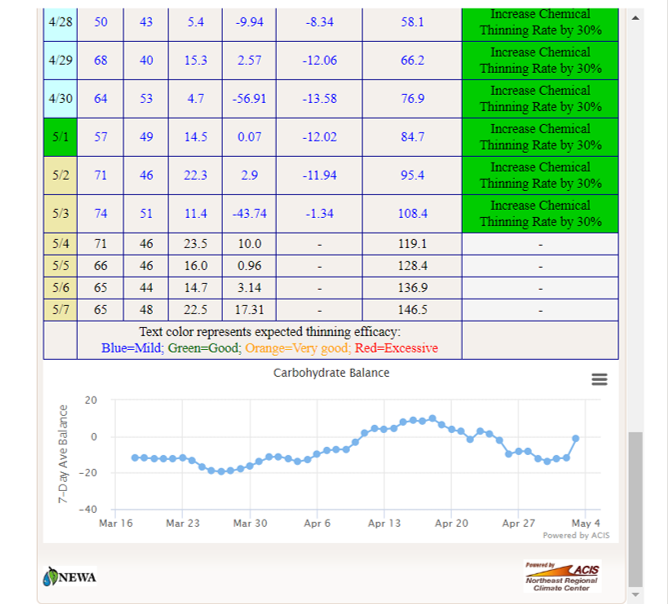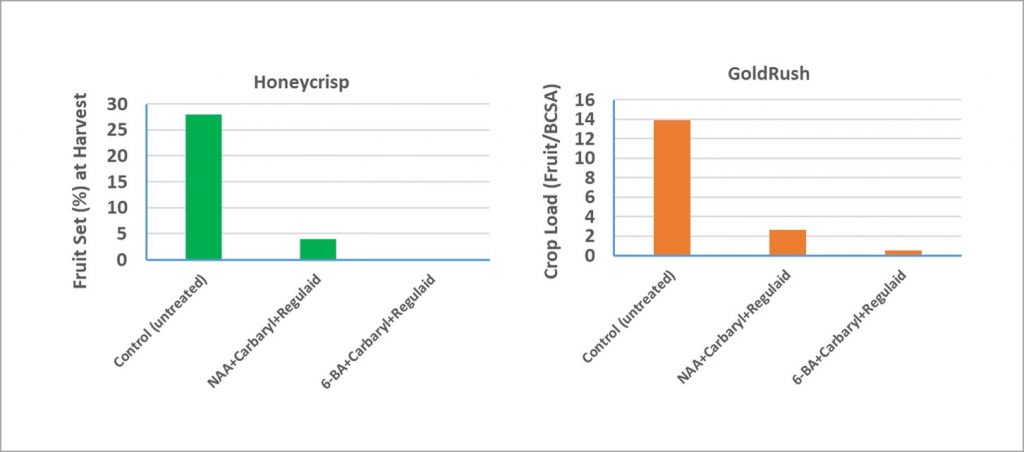Tree row volume TRV is the water volume needed to spray the tree canopy to the point of runoff. This is also defined as the dilute volume. Some might believe that 100 gals/acre is the dilute volume, but this is not true in all cases. TRV can considerably vary from one orchard block to another depending on planting density, tree height, and treewidth. Please see the equation below:
TRV = (Tree height X Tree width X
43,560 X 0.7) / (Between row spacing X 1000).
Example 1: You have a 7-year old Gala block planted at spacing 4’X12’ and the trees reached 1’ above the top wire (10’). How much water volume is needed to adequately cover all trees/acre to the point of runoff?
TRV = (11 X 8 X 43,560 X 0.7)/ (12
X 1000) = 223 gallons (~ 200 gal/acre).
Please note that younger trees and trees on very dwarfing rootstocks (e.g. B.9) might require less than 200 gals (probably between 100-150 gal), despite being planted at the same spacing (4’X12′). For instance, if you have a 5-year-old Honeycrisp/B.9 orchard planted at 4’X12′, and trees haven’t filled their allotted space yet. In this case, tree width would be around 6 feet (3′ in each side) and therefore TRV for this block would be 167 gals (You may round it to 160 gals) instead of 200 gals.
It is crucial to determine the TRV for each block in order to make further calculations for the chemical materials that you should apply at concentrate spraying. For instance, if your TRV is 200 gal/acre, and you set-up your sprayer at 100 gal/acre. In this case, you should add 2X the rate of each chemical (except surfactant and oil) in the spray tank, to get the same effect you would get if you applied the regular rate at the point of runoff (200 gal/acre).
Example 2: The recommended rate of thinning materials at petal fall for Gala is (48 oz of 6-BA) and (1 pint of sevin)/100 gal dilute. How much chemical materials you should add to a 500-gal spray tank if the TRV for your Gala block is 200 gals/acre?
- In this case, you need to add 2X rate of each
chemical (at dilute/acre).
- 6-BA = 48 X 2 X 5 = 480 oz/500 gal +
- Sevin = 1 X 2 X 5 = 10 pints/500 gal to cover
5 acres at concentrate.
Example 3: You decided to turn-off the bottom half of the nozzles and focus your thinning sprays on the top part of the tree (which I generally recommend for thinning sprays). In other words, each acre will receive only 50 gals of the spray mixture. How much 6-BA and Sevin you should add to your 500 gal spray tank if the TRV is 200 gals/acre?
- In this case, you need to add 4X rate of each
chemical (at dilute/acre).
- 6-BA = 48 X 4 X 5 = 960 oz/500 gal +
- Sevin = 1 X 4 X 5 = 20 pints/500 gal to cover
10 acres at concentrate.
Should you have any questions or comments, please don’t hesitate to call me at 540-232-6035, or email me at: ssherif@vt.edu. You can also use the comments section below to send questions and comments.
Sherif M. Sherif, Assistant ProfessorVirginia Tech, School of Plant and Environmental Sciences, AHS Jr. Agricultural Research and Extension Center
595 Laurel Grove Road, Winchester, VA 22602


